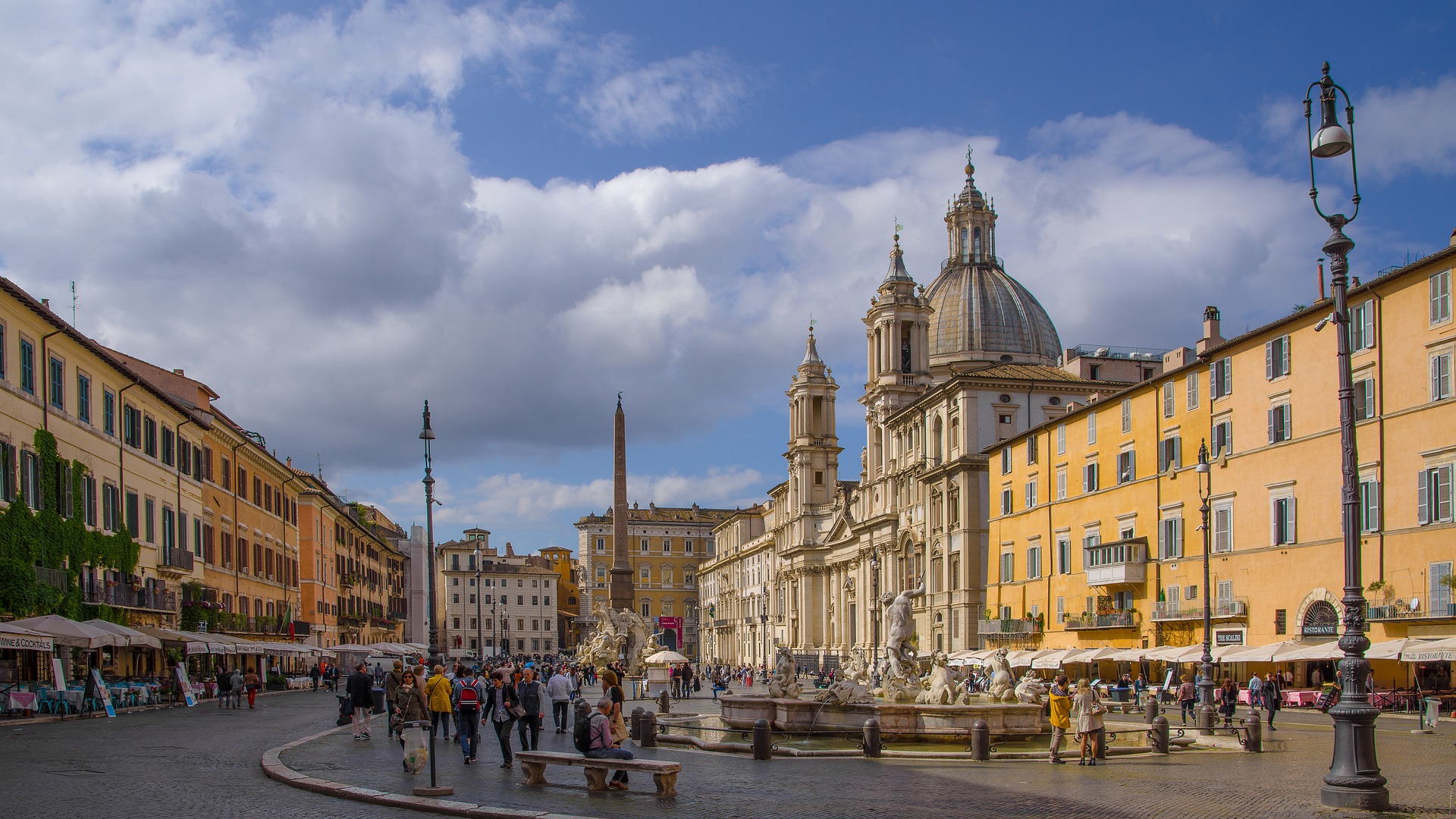
In addition to its monuments, palaces and churches, a city is also made up of the memories it evokes and the life that passes through it. A daily life that, in Rome, has always been marked by rites, holidays, anniversaries, celebrations: a full program of fixed events which, with their load of traditions, represented a (religious or civil) occasion for reflecting, meeting, sharing and having fun, season after season.
If some of them have not resisted the oblivion of time or have lost part of that sense of perfect wonder that they used to give to the Romans and to the many visitors of the city, others are still alive and kicking, even richer today than in the past. And some others, even if born in more recent years, are already part of the modern and contemporary “traditions” of the city.
To fully experience Rome and immerse yourself in its history, month by month we will present you some of the special days and moments of the city, the past and present one – the most heartfelt or awaited events, or even simply the most curious ones.
-
New Year’s Day and the plunge into the Tiber, 1 January
-
The Befana, 6 January
-
Carmentalia, 11 and 15 January
-
St. Anthony the Abbot and the blessing of animals, 17 January
-
Moed di piombo or Purim of Rome, 20 January
-
St. Agnes and the lambs, 21 January
New Year’s Day and the plunge into the Tiber, 1 January
Perhaps to exorcise the fear of the future and the beginning of a new year, New Year’s Eve has always been accompanied by a good number of superstitions and a certain carefree, madcap merriment. A carefree madness that also marks an all-Roman ritual mentioned even in tourist guides, that plunge into the Tiber that has been repeated every New Year’s Day since the mid-1940s. To be precise, the tradition dates back to the ancient Romans, with a mythological origin and a lustral and augural, purifying value. The man who renewed it in modern times, however, with a less solemn intent, was the Italian-Belgian Rick De Sonay. On 1 January 1946, to celebrate his birthday, which fell precisely on that day, he jumped into the icy, swirling waters of the river in his bathing suit and a top hat: a swan dive from the marble balustrade of Ponte Cavour, just a few steps from the Piazza Cavour and Sant’Angelo Castle, immediately after the midday firing of the Janiculum Hill cannon. The plunge became an annual fixture, and each time, once he emerged unharmed from the water, De Sonay reassured the cheering crowds with the “OK” hand gesture. “Mister OK”, as he was soon nicknamed, became in time so popular that he was immortalized in Dino Risi’s film “Torture Me But Kill Me with Kisses”, where he saved a desperate Nino Manfredi from committing suicide in the Tiber. De Sonay took his last dive in the 1980s but the tradition was continued by his faithful disciples. The most famous epigone, the new Mister OK, however, is Castel Fusano lifeguard Maurizio Palmulli, who already has 34 dives to his credit. And like his predecessor, Palmulli also entered film history with a cameo in Paolo Sorrentino’s film “The Great Beauty”.
The Befana, 6 January
Before being overshadowed by the modern tradition of Santa Claus, the task of distributing sweets and toys, or ashes and coal in the case of less exemplary conduct, fell to the Befana, who carried it out with a hint of detached irony. A “profane” symbol of the feast of the Epiphany (in the Bible tradition celebrating the visit of the Three Wise Men to Baby Jesus), from which it derived its name through corruption into “Pifania” and then “Befania”, the Befana actually has very distant origins, to be traced perhaps to the festivities of ancient Rome for the winter solstice, with the goddess Diana allegedly flying over the fields blessing the harvest. This possibly explains why the Befana, who in the meantime had taken on the guise of an elderly witch riding a broomstick, has always had a special connection with Rome: throughout the 19th century, the heart of the festival was Piazza Sant’Eustachio (which also gives its name to the city’s Rione) and the nearby alleys, which hosted a market of cribs and toys, with wine and sweets to raise the temperature. After the Unification of Italy, the fair moved to Piazza Navona, home until then to the ancient herb market, which in turn was moved to Campo de' Fiori. Since then, with very few exceptions, Piazza Navona has become with its merry-go-rounds and stalls a must for Romans during the holiday season and the magnificent setting for the Epiphany celebrations. However, there is also another place linked in the past to the Roman Befana: the basilica of Aracoeli. An ancient belief has it that to win at the Lotto game it was necessary to climb the steep entrance staircase on one’s knees, invoking precisely the Three Wise Men. Moreover, every 6 January, the highly venerated Aracoeli Baby Jesus statue would leave the basilica to be carried in procession throughout the city and symbolically “bless” Rome.
Carmentalia, 11 and 15 January
A sorceress and prophetess, patroness of births and midwives, Carmenta is a mysterious and very ancient goddess: she was also credited with the invention of the Latin alphabet, introduced to Italy by her son Evander, who, after landing in Italy fleeing from Troy, is said to have founded at his mother’s suggestion a new city on the hill that would later be called Palatine. That she was an important goddess to the Romans is evidenced by the fact that she had a priest dedicated to her cult (the Flamen Carmentalis) and a temple on the slopes of the Capitol Hill on the side overlooking the Tiber, near one of the city gates, the Porta Carmentalis. Chiefly observed by women, festivals in her honor lasted from morning to dusk, with ritual involving non-bloody sacrifices and milk libations because the goddess of births did not tolerate the killing of animals. For the same reason, one could not enter her temple wearing leather clothes and ornaments. The Carmentalia were initially only held on 11 January: the second date was introduced at the behest of the Roman matrons, devoted to the goddess, following a historical fact. The senate had in fact forbidden women from using covered chariots: the matrons joined forces and refused to fulfil their “conjugal duties” until the senate went back on its decision. But why was the festival celebrating the mystery of birth in January? Going back nine months, that is, to the time of conception, we come to April, the month dedicated to the goddess of love Venus, thus particularly suitable for weddings, while May and part of June were considered unlucky for getting married.
St. Anthony the Abbot and the blessing of animals, 17 January
The docile pig habitually depicted at the feet of the hermit Anthony, considered the father of organized Christian monasticism, would symbolize the defeat of the temptations to which the devil subjected the saint during the long years he spent in the desert between the 3rd and 4th centuries. A few centuries later, flesh-and-blood pigs roamed freely in the towns and countryside where the communities of the Hospital Brothers of Saint Anthony had settled: the monks raised them and also used their fat to cure the infamous St. Anthony’s Fire. From pigs to all the animals of everyday peasant life it was a short step: the saint was thus elected their protector, and on his feast day it became customary to impart a special blessing on domestic animals. In Rome, the ceremony took place as early as 1437 on the parvis of the Esquiline church named after the saint, crowded from the first light of dawn by pigs, burros, sheep, and horses “pieni de fiocchi bianchi e rossi e gialli”, full of white and red and yellow flakes, as Roman poet Gioacchino Belli wrote in one of his sonnets. What enchanted Romans and foreigners visiting Rome, including Goethe, however, were above all the magnificent carriages of the nobles or, in the last years of papal rule, the long line of Postal Service horses and the characteristic uniforms of their postillions – black felt hats edged with gold, yellow leather breeches, green jackets with red lapels and tall boots. The blessing naturally presupposed an offering to the church, which was often substantial: an income that was also coveted by other parishes, so much so that in 1831 a “suspension a divinis” was threatened for those who performed the rite outside the church of Sant’Antonio. In the early 20th century, however, due to traffic problems, the ceremony was diverted to the steps of the nearby church of Sant’Eusebio, a short walk from Piazza Vittorio, where it is still held today albeit in a reduced form.
Moed di piombo or Purim of Rome, 20 January (moveable feast between January and February)
It is a small but extraordinary miracle – the story of an escaped danger – celebrated by the Jewish community of Rome, the oldest in Europe, on the second day of the month of Shevat, at the turn of January and February. The events date back to 1793, as the winds of the French Revolution were blowing across Europe. On 13 January (2 Shevat 5553), seeing the tricolor cockades of the French Republic, to the cry of “Death to the Jacobins!” an anti-revolutionary and papal Roman crowd attacked the open carriage of diplomat Nicolas-Jean Hugon de Bassville on Via del Corso, mortally wounding the man. The next day, a group of inhabitants of the Rione Trastevere, Monti and Regola headed for the Ghetto, considered a den of revolutionaries and supporters of the libertarian ideas of the French people. It was to be a day of rioting, looting and violence, with repeated attempts to set fire to the gates of the Ghetto, at the time inhabited by thousands, and to the nearby Pons Fabricius, also known as Pons Iudaeorum (Jewish Bridge). The papal soldiers intervened to quell the anti-Jewish uprising, but what finally dispersed the frenzied mob was an exceptional, as much as unexpected, meteorological event: miraculously, the sky suddenly turned gray and heavy rains began to fall extinguishing the fury of a now tired and wet crowd. It was an extraordinary event in which it was possible to see God’s action and which Roman Jews began to commemorate by instituting the celebration of the Moed di piombo (solemn feast of the leaden skies), also known as the Purim of Rome: as on other happy occasions, the Tachannun supplicatory prayer is not recited on that day.
St. Agnes and the lambs, 21 January
Killed by a sword piercing her throat, just like a lamb, on 21 January of an unspecified year in the early 4th century. A symbol of purity and sacrifice, a lamb usually accompanies in traditional iconography the very young Roman saint Agnes, martyred at the age 12, perhaps during Diocletian’s persecutions, in the ancient Domitian Stadium. Her body was buried in the catacombs on the Via Nomentana: a century later, Constance, daughter of Emperor Constantine the Great, built here a basilica named after the young virgin saint. And in that basilica, rebuilt in grandiose forms by Pope Honorius I in the 7th century, an ancient rite attested since the mid-15th century still takes place on 21 January each year, on the feast day of St. Agnes – the blessing of lambs. Church history in Rome tells us that two sheep or lambs were the fee the basilica owed to the canons of St. John Lateran, and even today the solemn mass preceding the special blessing is officiated by the abbot of the Lateran Canons Regular. The ceremony is also attended by the friars of the Abbey of the Tre Fontane, who since 1909 have taken charge of continuing the centuries-old tradition. The lambs are then entrusted to the care of the nuns of Santa Cecilia in Trastevere: from their wool are made the pallia, the white stoles reserved for the most solemn liturgical occasions that the pope gives to the new metropolitan archbishops on 29 June, the feast day of the Holy Apostles Peter and Paul.
February in Rome. Key dates and events (today as in the past)
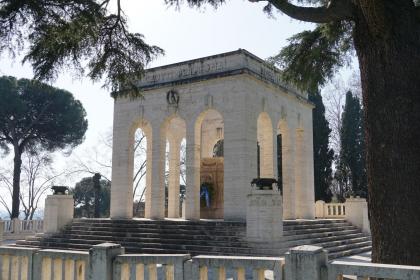
March in Rome. Key dates and events (today as in the past)
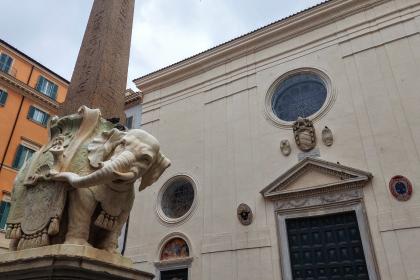
The river Tiber

According to legend, the history of Rome begins right here
A city within a city: the rioni of Roma
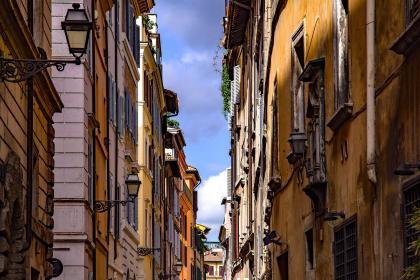
Origin, history and fascinating facts about the ancient districts of Rome
Janiculum Hill
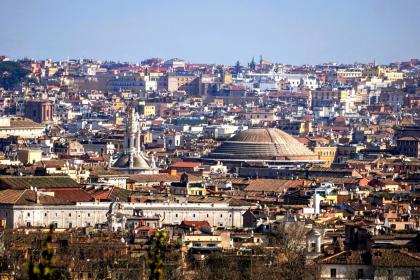
 Condividi
Condividi
Rome in 20 unmissable films
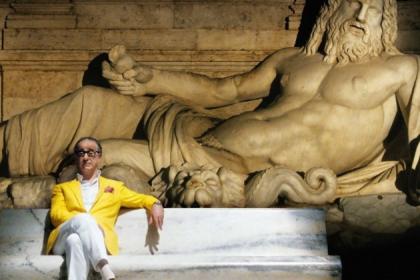
A cinematic journey between past and present, to discover the Beauties of Rome
Discovering “The Great Beauty”

 Condividi
Condividi
Vittorio Emanuele II Square
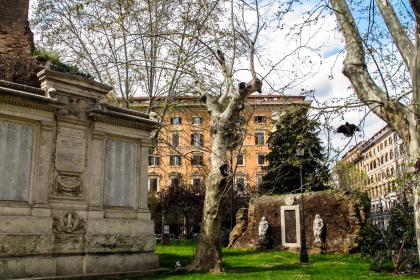
 Condividi
Condividi
The heart of the multi-ethnic Esquilino district
Artists' 'homes' in Rome
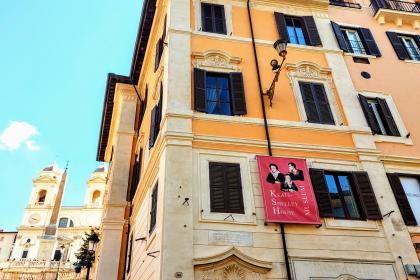
Roma è stata meta di tanti celebri artisti stranieri
Navona Square
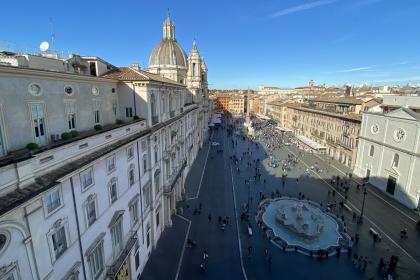
 Condividi
Condividi
The most iconic square of Baroque Rome
The Church of Sant'Agnese in Agone
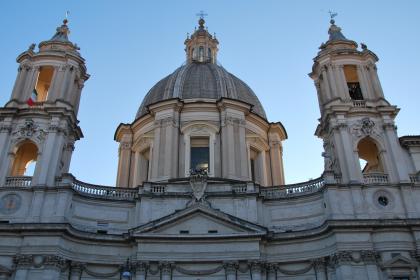
 Condividi
Condividi
The Basilica of Sant'Agnese outside the Walls and the Mausoleum of Santa Costanza
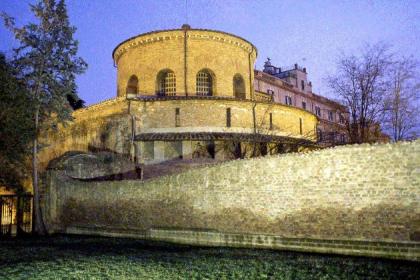
 Condividi
Condividi
The Pope’s pallium

The old Jewish Quarter
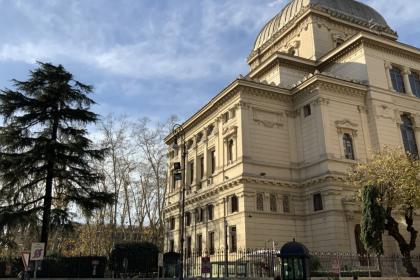
 Condividi
Condividi
The Great Temple
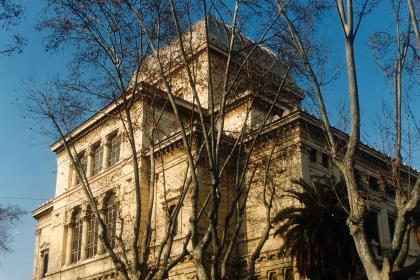
 Condividi
Condividi
The Capitoline Hill: a place of legends
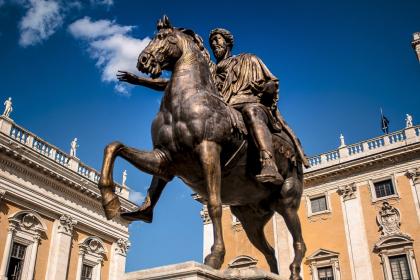
The Roman Forum and the Palatine
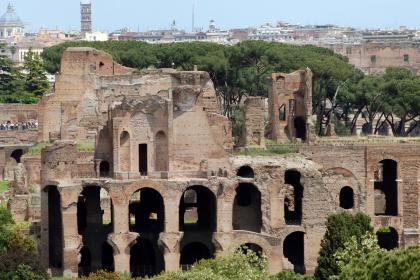
 Condividi
Condividi











































